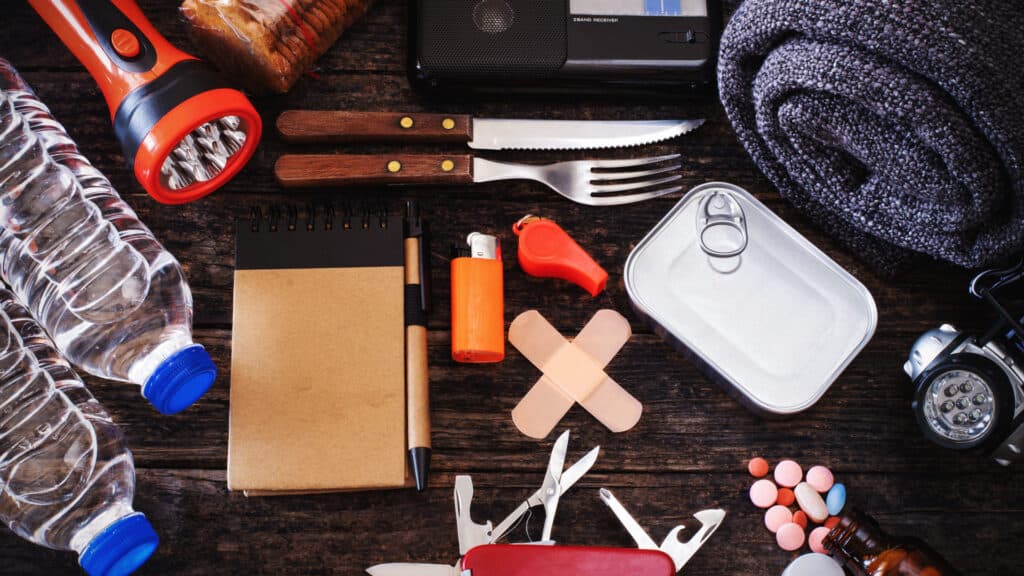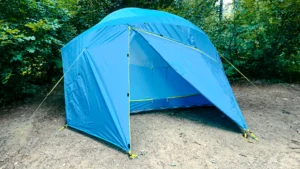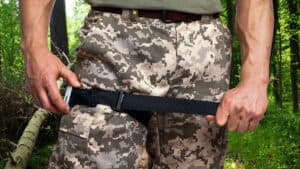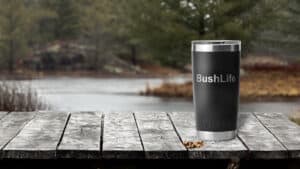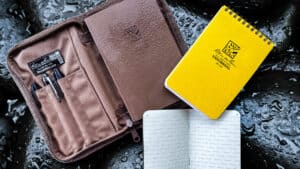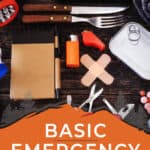The federal government is pushing everyone to have a basic emergency kit. Announcements promoting emergency kits have been aired on the radio, along with bad weather warnings and TV. You can find their exact survival kit suggestions with this link. While this all seems like a great idea and is technically the right thing to do, in typical government fashion they got an incredible amount of things wrong! They missed some points that are crucial to survival. So, we are going to fix that today!
The above link directs you to a one-page basic emergency kit checklist with zero explanation or direction whatsoever. This is all the federal government can come up with concerning your and your family’s survival in emergencies. Let’s put things further into context and mention this is all in fear of a flood, fire, tornado, blizzard, etc.
It’s not until you dig deeper and deeper into their links that you realize they are referring to 72 hours of survival. For me, 72 hours is pretty much already covered in my pack that goes everywhere I do. Call it what you want: go bag, bug out bag or get home bag. It’s a great thing to have in general. Further to the above, the car is rigged for emergencies during the winter months. That means a breakdown or getting stuck ANYWHERE is not a problem, no matter how cold it is!
So today, we’ll take their list and work through it step-by-step so you know what, why and how! And we’ll also address long-term emergencies in the process, well past 72 hours!
Discloure: Posts may contain affiliate links. Purchases made through our links result in a small commission to us at no charge to you. We only recommend products that meet our brand standards based on testing and first hand use by our authors.
72 Hours are Short-Term Emergencies
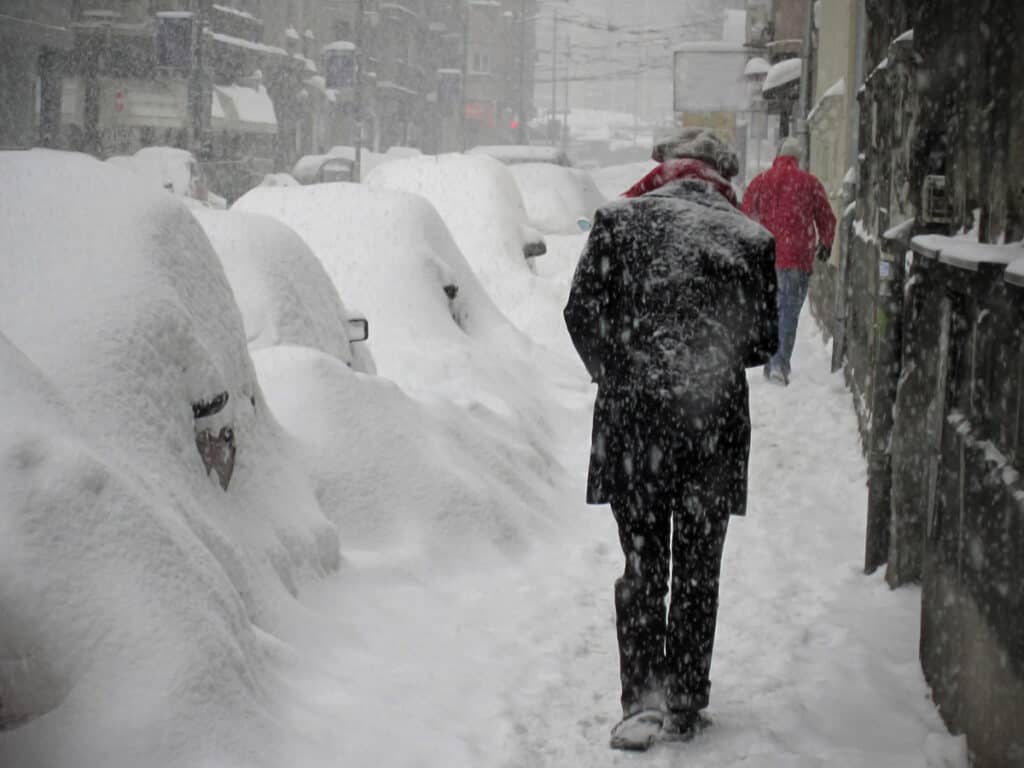
Here’s a big problem – 72 hours is a short-term situation. Twenty-five years ago, an ice storm knocked out power in Montreal for 29 days! We are not talking about the forties here or some third-world country. This power outage happened in the modern times of 1998 in Canada! Now ask yourself, are you ready for such a thing? If not, you need to keep reading.
The other things to remember are that electricity, running water, fully stocked grocery stores and so on are luxuries that many nations don’t enjoy and that we already take for granted. There are ZERO guarantees that these luxuries or services, so to speak, will be there for you during emergencies or disasters. Therefore, DO NOT count on them as you work through your emergency kit! You shouldn’t even count on 9/11 as the whole point of this kit is to prepare you for times when help CANNOT physically get to you, or help is overwhelmed with the sheer volume of requests.
Basic Emergency Kit Checklist:
Let’s do this as simply as possible. The exact wording from the government will be in red. Everything non-government, which we’ll elaborate on and correct is in black. So, let’s get started and look at their recommendations for a basic emergency kit for home.
Water
Two litres of water per person per day (include small bottles)
Yes, of course, water is vitally important for survival. You will only survive for 3 days without it! The moment the tap stops flowing, you will find some grave challenges in the water department:
- Water needs to be sourced and transported, which we will cover.
- It then needs to be filtered AND sterilized to be safe for human consumption.
- We use a ton of it. The average Canadian uses 335 litres of water a day! That isn’t hard to believe when a single toilet flush is 4 litres.
- It’s an emergency, correct? Blizzard, flood, fire, civil unrest, whatever. Do you want to venture out to fetch water? Or will it even be possible considering the circumstances? So store some!!!
Short-Term Needs: Store Some Water
Where I live, the tap water is not potable. Instead, we buy 20-litre jugs and a few extras for our drinking needs. For those who live in the city, you should keep at least a few jugs to cover your immediate water needs. You also don’t need to run out and buy a water cooler to dispense it – there are simple hand pumps that fit around the neck and seal the bottle nicely.
In the government additional items list, they say:
Two additional litres of water per person per day for cooking and cleaning
That means we are at 4 litres – this is modest considering the average person needs 5 litres of water/day. For a family of 4, you need 20 litres a day! That also means a few 20-litre jugs, as I suggested earlier, which provides 60 litres total. Sixty litres should last about 3 days or 72 hours to cover your immediate needs! And by this, we are talking about basic or survival water needs with zero luxuries.
Long-Term Needs: Source Some Water
I grew up in Burlington, Ontario and lived there most of my life. It’s your typical Canadian city, but it’s now pushing almost 200,000 in population. If a longer-term disaster strikes, a LOT of people will line the VERY FEW publicly accessible parts of Lake Ontario to fetch water! Remember, water can also be sourced from streams, rivers, etc.
Do your homework now and find some water sources so you know where to go if and when you need it. In other words, stop thinking like the masses, as they will be your competition for resources!!! Also, ensure you have some buckets with a handle and some rope. You may need to pull from a bridge or toss a distance when the shore edge is difficult to access. See our post about making safe drinking water, or better yet, print it and keep it in your emergency kit. You now have unlocked limitless amounts of water!
We will circle back to water filtration a bit further in the post. This post is written in the same order as the government’s emergency kit checklist.
Food
That won’t spoil, such as canned food, energy bars and dried foods (replace once a year)
Even though most Canadians will easily have 72 hours of food on hand, it’s a great list above if you need to be on the move. Now add MREs to that, and you now have a powerful kit.
Here’s the part you won’t like: While it’s uncomfortable and unhealthy, you can technically survive without food for months! I’m not suggesting you do this by any means – understand that technically, and let’s stress technically, food for 72 hours is NOT a survival priority – at least for a typically healthy person.
We raise this point to remind you that if you are injured or bleeding out, or are in a physically unsafe situation, or pose the risk of freezing or lack water, those needs come first! And pretty much in that exact order.
Further Reading: What is a Meal Ready to Eat? A Complete Guide to MREs for Outdoors and Survival
Long-Term Food Needs
How much food you stock depends on your threat levels. What I mean by that is, what are you afraid of? Is it just a blizzard, ice storm, etc, or do you fear a massive earthquake or war? Let’s face it – reading this post means you are worried about something. So decide what worries you, be honest, and then reverse engineer a plan to stock enough food accordingly.
A 3-6 month supply is generally not hard to achieve, and for some, they will even target a one-year supply.
And no, you DO NOT “replace” it once a year! That’s just ridiculously dumb and wasteful. What you do do is constantly rotate your food so you don’t waste it. Over time, build up your pantry with more staple items like rice, canned goods, cereals, flour, etc. Items that generally have a longer shelf life. Remember to rotate the oldest items and consume them as you normally would – this ensures a fresh emergency food supply.
Manual Can Opener
That’s a no-brainer, even though you can open cans with something as simple as a knife. What should be on the priority list is a means to cook food! So many staples like rice and pasta need boiling water, not to mention boiling is also the best way to sterilize water!

You’re well covered for those with a natural gas stove that isn’t too electronic. Without a natural gas stove, your next best thing is a barbeque hooked up to a natural gas supply which doesn’t run out. If the natural gas supply were to stop, we would be in some serious trouble! A backup to that is something like a Jetboil or MSR mini stove with ample cans of gas, and a backup to the backup is cooking on an open fire.
Further Reading: Techniques to Make Safe Drinking Water in the Bush
Wind-Up or Battery-Powered Flashlight
(and extra batteries)
You should already have several flashlights and batteries at home. Add a flashlight to your bug-out bag as well as a headlamp. A headlamp allows you to work, cook and so on while keeping your hands free. Also, add several candles in the mix – they are cheap and burn for a long time. Candles are also EMP or solar flare-proof and will always work no matter what!
If you want to level up this category, get a battery bank, solar panel and rechargeable flashlights to cover extended periods without electricity.
Wind-Up or Battery-Powered Radio
(and extra batteries)
Again, a no-brainer. What I prefer, and the same goes for any prepper-minded person, is ham radio. A cheap Baofeng radio has FM radio built-in AND all the ham bands. It’s also two-way – meaning you can reach out for help and not just listen.
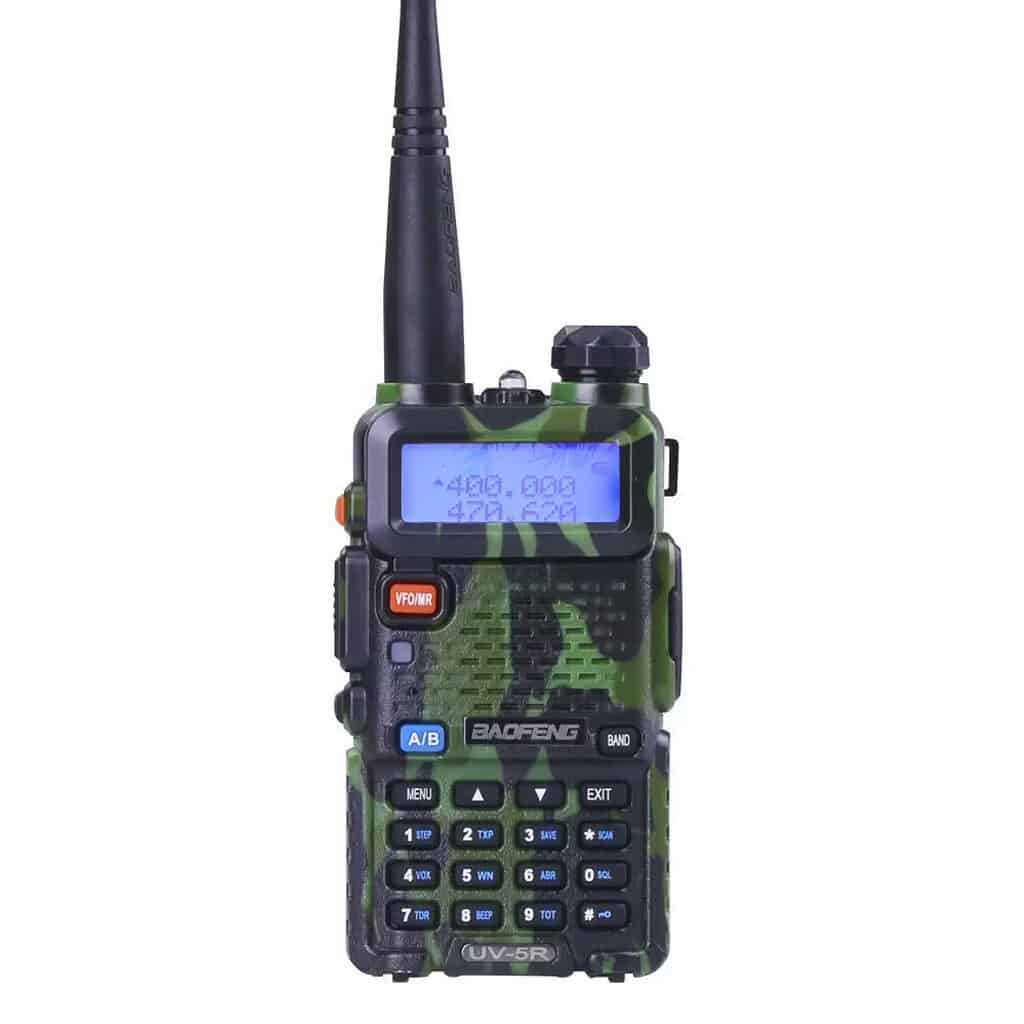
First Aid Kit, Extra Keys for Your Car and House
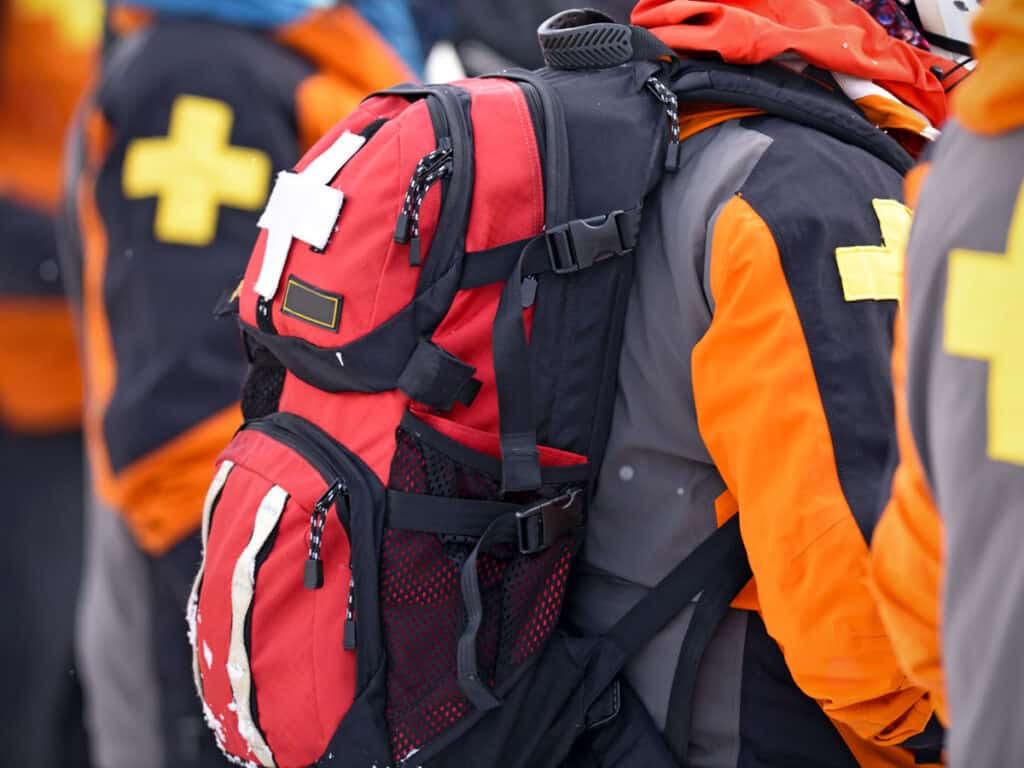
A first aid kit is a must. I keep one in my pack, the car, the boat and so on. There’s also an emergency medical kit for the serious issues that may arise – car accidents, chainsaw accidents, etc. These are not band-aid solutions but rather stop the bleeding items for severe trauma.
Usage for an emergency medical kit is when 911 is too far away or even too slow. Imagine a blizzard where assistance physically can’t get to you, and there are several calls. Now imagine a massive earthquake where thousands of people are seriously wounded, transportation may be impossible, comms are down, and first responders are utterly overloaded.
While the basic first aid kit supplies will help you with minor medical issues, putting together an emergency antibiotic kit with a trauma kit will help you be much more prepared. The Jase Medical Kit is perfect for preppers, at home and even for outdoor enthusiasts. The kit comes with a handy booklet on how and when to use the five most common antibiotics along with the actual medications, all in a neat case. And it’s shipped right to your door! Best of all, support from actual doctors is available to you when you need it most.
Cash, Travellers’ Cheques and Change
Absolutely. ALWAYS have cash tucked away somewhere and not just $20. Have enough money to fill your car several times, for food and so on. Imagine covering ALL your expenses for 72 hours and in a state of being in motion away from home.
Just bear in mind that for severe or long-term problems, cash may become useless! The store owners will only take it for so long, and they’ll realize they can’t do much with it themselves. Food, gasoline and even the addiction items (cigarettes, alcohol) and so on will come in handy as bartering items. When the grid is down long enough, society will revert to a bartering system. It’s guaranteed!!!
Important Family Documents Such as Identification, Insurance and Bank Records
Since we drive and pay for things, we all carry some form of ID. At a minimum, everyone should have a driver’s license, health card and multiple payment methods on person.
Bank records, insurance or other vital documentation are not “survival” or “emergency” documents. When the house collapses from a storm, and you seek immediate shelter, you can call insurance later! There’s a good chance they’re busy anyway with the 10,000 other people calling them. Store your most important documents, like proof of insurance, the house deed and your most recent bank statements in a firebox. Store copies of your most vital documents offsite.
If anything, you should have your secondary ID documents (birth certificates, passports and so forth for all family members) readily available in one location. These are those offsite copy types of documents. And remember, it’s not just damage to worry about – it’s those times you physically can’t or may never be able to get to them.
Emergency Plan – Include a Copy in Your Kit as Well as Contact Information
Pay attention to the “emergency plan” words on their checklist. You would never notice that it’s a link which goes to this page and covers these exact points:
- Safe exits from home and neighbourhood
- Meeting places to reunite with family or roommates
- Designated person to pick up children should you be unavailable
- Contact persons close-by and out-of-town
- Health and insurance information
- Places for your pet to stay
- Risks in your region
- Location of your fire extinguisher, water valve, electrical panel, gas valve and floor drain
These are all self-explanatory and should be part of daily life, let alone an emergency kit.
The bigger picture requires us to ask what type of emergency should we plan for – hurricanes, earthquakes, blizzards, or war. Or are we trying to get through a few snowed-in days? Each scenario will have different needs and priorities, so it’s impossible to plan for everything.
I strongly recommend, or stress more than anything, establishing a meeting point for your family if you encounter a SHTF scenario. Usually, this is your home. If the grid goes down, so will your comms, and you need to be able to find your loved ones, gather your supplies and adjust your plans accordingly based on the actual circumstances. I highly suggest having a second meeting location in case the home is compromised or unreachable. Remember: Nothing is more important than reuniting with family!
Further Reading: Emergency Medical Kit: Surprisingly Life and Death is 9 Items
Rapid Deployment
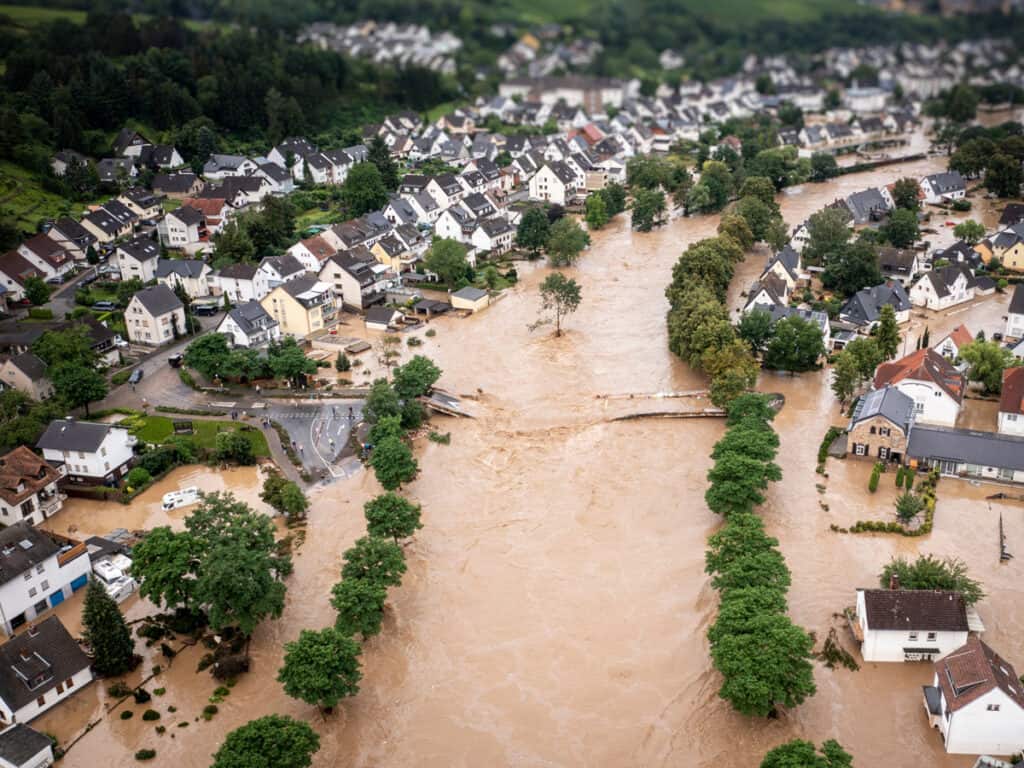
As to your emergency kit, have everything organized. You should be able to deploy things quickly! Imagine a flood coming, and you have an hour to get your stuff and move to higher ground. Your pantry should have a section with staple items you can quickly box up if you need to bug out.
I would also recommend putting together a bug-out bag with your most basic survival items for rapid deployment. The go bag is for those times of zero warning or opportunity to get your larger kit.
Alternate Source of Heat – Do Not Skip!
Look up and notice no red colour. It completely boggles my mind that in one of the coldest countries in the world, the federal government creates an emergency preparedness list, and at NO POINT is heat mentioned. NONE of the above and nothing in this post will matter if you freeze to death!!! In fact, other than a life threat such as a bleed, it may well be your top survival priority on a cold day! So, let’s evaluate what you have and what options are available.
Main Heating System
Most people have forced air and natural gas systems. But this requires electricity, which is not a prepper’s friend. Electricity is almost like an invisible, evil monster you constantly battle when thinking through an emergency or survival kit. That’s because everything you are so used to is out the window!
Then, if you are rural, you are dealing with propane gas, which needs to be delivered by a truck. The same goes for oil, except oil is always delivered regardless of where you live.
Another type of main heating system is electric, and NO amount of batteries or electric backup units will feed that for any significant amount of time. You would also need massive generators to power these unfeasible heating systems.
Luckily, There are Many Options
- Anything wood! A wood stove or fireplace is a piece of gold. It’s the most reliable and low-tech heat source. Even your fence and furniture are potential firewood. Suggested is you buy and keep some dry wood on the property and save the fence for later when your wood runs out.
- Natural gas fireplace: The natural gas fireplace saved many people in that Montreal ice storm we mentioned earlier. It’s a great heat source, provided the fireplace uses a pilot light system. Modern furnaces have no pilots – they have igniters (requiring electricity). Pilots, on the other hand, generate a small amount of electricity, and with a millivolt thermostat, you can run these devices without power! You won’t have a blower to circulate it, but you can cordon off a room and survive.
- Generator: Most people aren’t prepared to shell out $10,000 for an automatic generator. Learning the hard way, they also suck out the 1,380 litres of propane we have in a matter of days! An electrician can wire up a little transfer panel that covers your furnace and fridge. Then get the smallest generator you can get away with. Why? The big ones that run your whole house probably take 20L to run for 4-8 hours. Do the math, and you’ll see the problem. Make sure you stock up and keep at least 100 L of gas in your shed. This trick, however, is only for forced air, natural gas-type units as they don’t consume a lot of electricity. We can’t do much for electric heat as they draw too much.
- Sleeping Blankets: Several sleeping blankets are good to -30 degrees. Get one for each family member. It’s also your NO FUEL WHATSOEVER backup solution to the backup solution!
Gasoline – Do Not Skip!
Another non-red item and an absolutely 100% must – get some gasoline! Not only will it run a generator, it’s your only option to keep your car running if you haven’t switched to electric. It means having the mobility to source food and water or even get out of dodge if you have to!
Just because you buy gasoline all the time and it’s simply there, don’t expect to buy a single drop at your local gas station when the power goes out. They’ll be panicking about what to do with their fridges and how to call insurance, so they STILL GET PAID. Getting you gas will be the least of their concerns. And no, they don’t have generators to keep the pumps running!
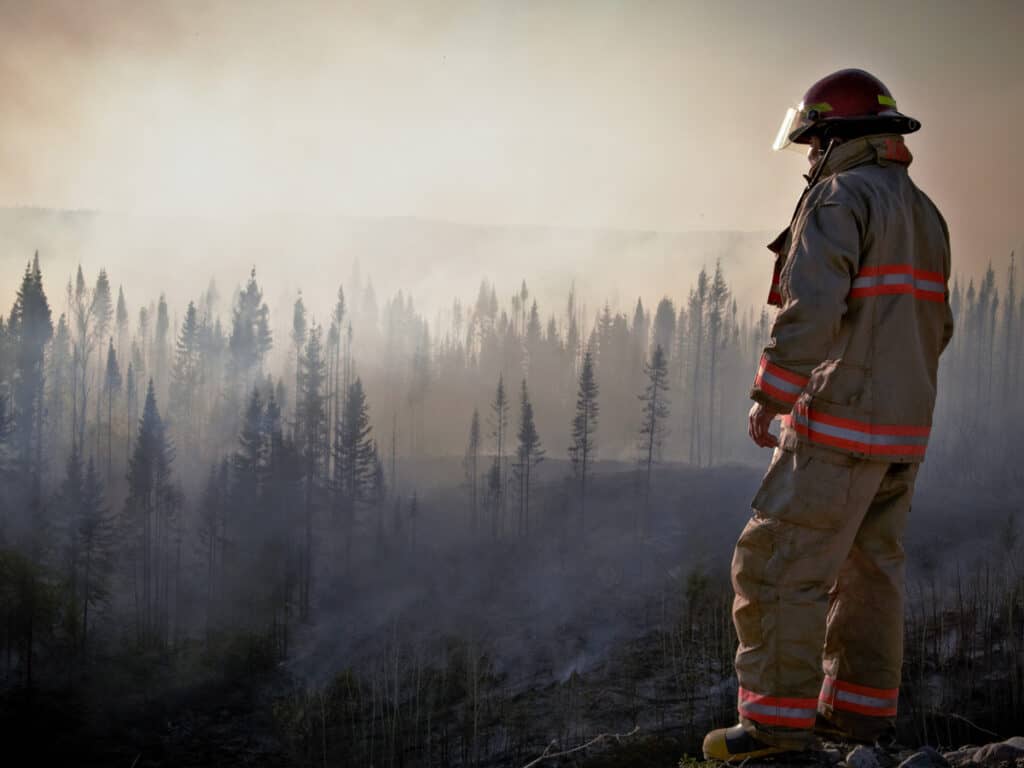
Consider These Additional Emergency Kit Supplies
Here is part 2 of what should an emergency kit include. These items are what the government sees as unimportant but suggested, even though we beg to differ.
Two Additional Litres of Water Per Person Per Day for Cooking and Cleaning
We covered this already earlier in the post.
Candles and Matches or Lighter
(place in sturdy containers and do not burn unattended)
We covered candles. However, we should mention that there is probably no better container than the UCO Candle Lantern. As to fire, no, you always need to have three sources of ignition! Better yet, make yourself a survival fire kit.
Further Reading: 7 Fire Kit Survival Essentials That You Should Carry
Change of Clothing and Footwear for Each Household Member
Think of this as seasonally appropriate clothing. Perhaps keep a bin or large bag ready with a spare jacket, gloves, socks, etc. You will find gloves and socks get soaked when you are fighting the elements in the winter months, and they are the first items that need to be changed.
Sleeping Bag or Warm Blanket for Each Household Member

We covered the sleeping blanket already, and I can’t stress it enough. An excellent commercially sold blanket is the Kuma Jasper. A good sleeping blanket should be on the main priority list and likewise in terms of budget.
Toiletries and Personal Hygiene Items
Agreed.
Hand Sanitizer, Toilet Paper and Garbage Bags
Same here
Prepaid Phone Card, Mobile Phone Charger
The prepaid phone card doesn’t make sense unless you are not on a monthly plan.
The charger is obvious. Make sure you have a means to power that charger if the grid is down! Battery banks are fantastic, like the Anker 20,000 mAh, which should recharge a typical phone about four times.
Pet Food and Supplies
Agreed.
Infant Formula, Baby Food and Supplies
Infant care items should be on the main list with 3 giant red flags on it!!! You don’t get food and leave your baby as optional – it’s the other way! They won’t survive for months like you will – babies NEED food!
Activities for Children Like Books, Puzzles or Toys
Activities will help keep your children calm and entertained while you enact you’re emergency plan.
Prescription Medications, Medical Equipment
Absolutely yes. But again, it should be on the main list. Many people are on medications that keep them alive.
Now the question is, how much do you stock? Remember, this is a 72-hour emergency kit. And I’m sorry, but when you are down to 72 hours’ worth of meds, you’re on the phone with the pharmacy for a refill, let alone worrying about a backup kit!
We can’t forget the recent drug shortages. With regular medications, talk to your doctor and see if you can keep at least a month’s worth in stock at home. If you can, when you refill scripts, do it a month in advance. It’s a little buffer or safety net. If your doctor can’t help you, Jase Medical can supply up to a year’s worth of the most common prescription meds.
When it comes to medical equipment, again, it may require power. That means spare batteries and/or a 110-volt power source such as a generator.
Utensils, Plates and Cups
Dear god, please help us:) Someone with very little knowledge wrote an emergency supply kit! You have this at home, and you’re not going to have room for luxuries in a kit, at least not one you can carry on your back. Even then, you’ll have more important items to worry about.
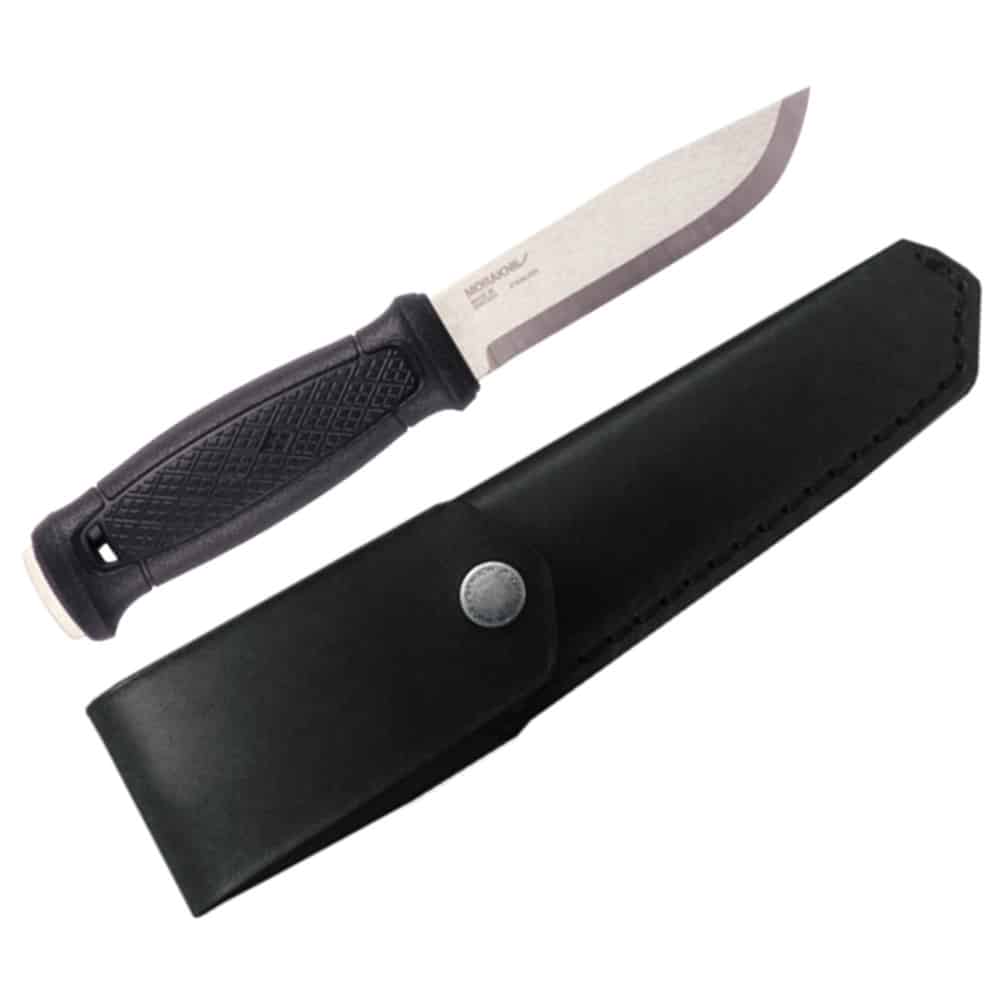
How about a proper knife that can process food, prepare tinder and kindling for a fire, or even start a fire, amongst other things? Let’s also ensure we have a METAL single-wall cup to boil, sanitize water and cook food. And perhaps a long-handled spoon, used to reach into an MRE bag without getting our hands dirty and to consume liquid meals.
Anything farther is a luxury and is at your option:)
Further Reading: Morakniv Garberg Carbon: What Makes Bushcraft Knives So Special?
Household Chlorine Bleach or Water Purifying Tablets
We covered water in great detail. While these items are ok, they should be your LAST resort! Don’t forget that they are chemicals, and too much bleach = well, death! The number of people that will mess this up will astonish you. Worst of all, they will precisely do this when medical assistance isn’t available.
Also, tell me what moron suggests bleach for human consumption without a giant warning label and VERY specific instructions on how much to use in your water. That info is here on a webpage from the EPA, and it takes seconds to add. Just so you know how potent this stuff is, 2 drops is enough to kill anything inside 1 litre of water!
Read our post on making safe drinking water, and better yet, print it and keep it with your emergency kit. There are much better ways to make water safe!
Basic Tools
Hammer, pliers, wrench, screwdrivers, work gloves, pocket knife
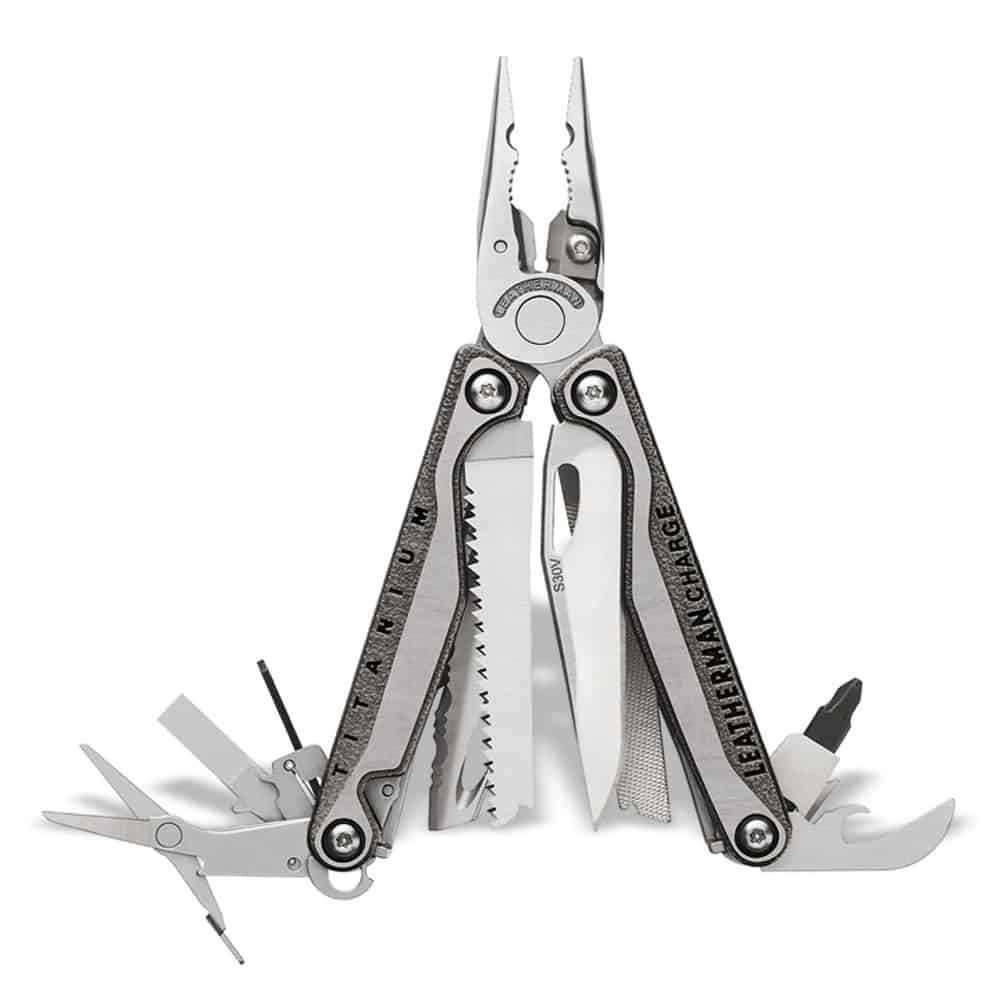
Absolutely. But if you need to be on the move, you will want to sub for a multi-tool like a Leatherman.
Further Reading: Leatherman Charge + TTi: Say Hello to My Little Friend
Small Fuel-Operated Stove and Fuel
Agreed and move it to the main priority list.
Whistle
(to attract attention)
Absolutely. You need to be found to be rescued!! Add a ham radio, orange cloth, signal mirror, and other gear to signal for assistance.
Duct Tape
Don’t laugh, but it’s a good item and not to be overlooked. Duck tape solves a million problems and is even great at starting fires. I prefer and carry a 1″ roll of Gorilla brand duct tape in my pack. There’s also some duct tape wrapped around my Ferro rod which is in my multi-tool sheath, on my belt – every day!
Further Reading: How To Use a Ferro Rod the Easy Way
Now, Let’s Add Some More Stuff to Your Emergency Survival Kit
Vapour Barrier
Use it with the duct tape above to seal off a room. Perhaps you have a heat source that can’t heat your home but can heat a room! A vapour barrier will make this a reality.
Big winds put an object through a window, and you can board it up with a vapour barrier in minutes. It won’t be strong but, it will keep the cold air out.
Don’t have a vapour barrier – use your shower curtains!
Get a Compass!
And learn some land navigation skills. Most of this post is about sheltering in. However, we always need to consider having to leave! You cannot count on technology or vehicles. The only things you can count on are your feet and a compass!

Building Your Emergency Kit
On the government website, there is mention of pre-fab emergency kits available for purchase. I’ve seen one, and it had pouches of water in it. It’s not dumb it’s quite genius, for the company that is! Someone is making a killing selling inexpensive water for a premium. There’s not enough water to make a Kraft dinner, so what happens when that water runs out? What should be in there is a portable water filter like the Grayl Geopress that can make hundreds of litres of water. Water that you don’t need to store and, more importantly, carry with you! This pack also had dollar store-grade polypropylene rope, amongst several other useless items.
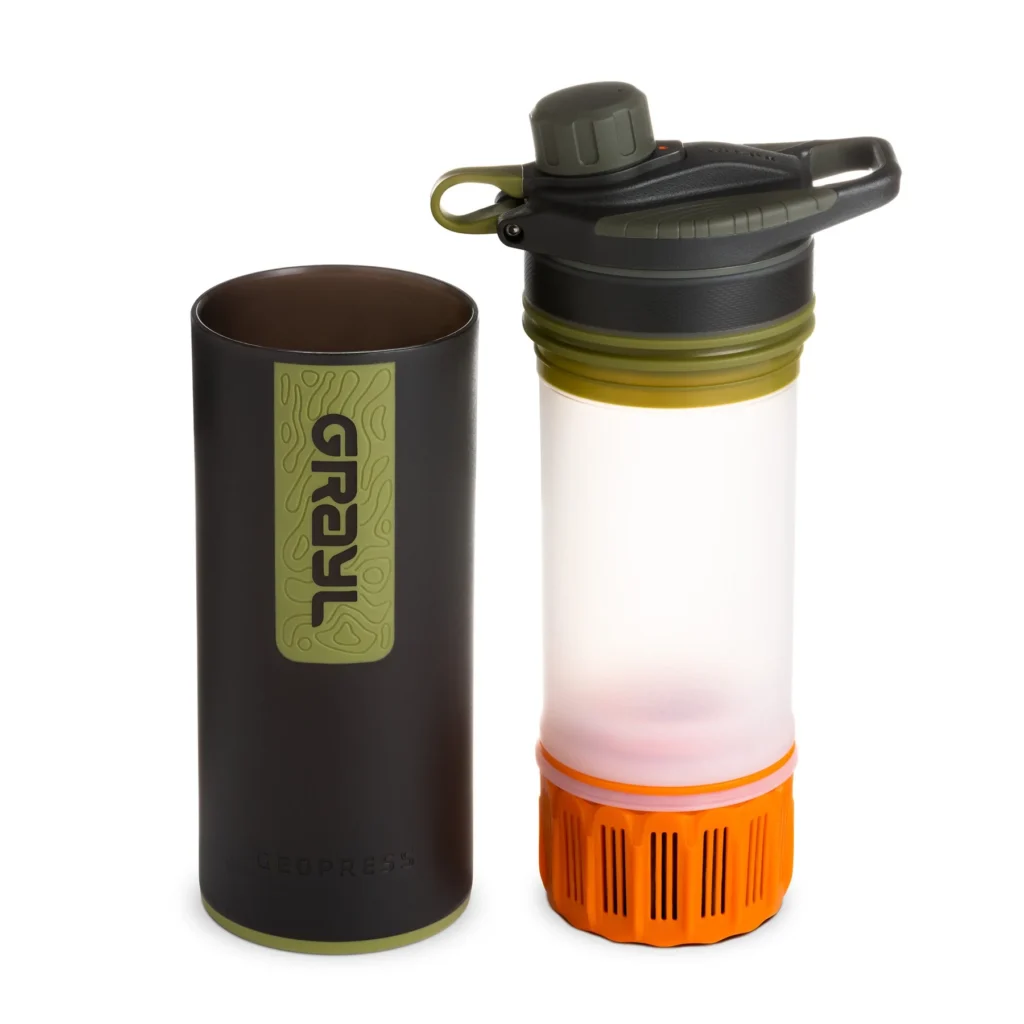
If you’ve read this far, you probably absorbed 4,000 words already. That also means you are very serious about this. So take that seriousness and do something about it by taking actionable steps to prepare and secure your family’s future. What that means – do your research and build an emergency kit with practical gear and not gimmicks! A good starting point is our survival pack post. In it, you’ll find several links to the very products we use here.
Further Reading: Backpack Survival Gear: Secrets of the Ultimate Bug Out Bag!
One Last Thing Before We Go
There is one final thing we need to add before we wrap up. The last time a war was fought on Canadian soil was in 1812! If you mention the potential of war to anyone, they will look at you as though you are crazy. You need to understand them because over 200 years of peace have programmed us into thinking it is a granted right and that war is unfathomable here.
Here’s the problem. Like millions of Canadians, I am a product of war. Ask my grandparents if they ever thought a war would come to their homeland, and the answer would be NO. But it did, and not once, but twice! That’s why they emigrated here along with millions of other Canadians. So half the people reading this may think it’s absurd, and the others will understand every word because they learned from those who lived through the unthinkable.
The prepper community and/or the truly prepared will always consider war, and that’s not coming from me. Even if the odds are low or next to none, it’s not something that can ever be ruled out. So no, it’s not crazy, it’s quite the opposite. Only an intelligent person can fathom the things they may not understand.
So, let’s conclude with this. If you prepare your emergency kit for war, even though it never comes, you’ve covered ALL your bases. It also means surviving that next blizzard becomes as easy as a walk in the park!
If you found this post helpful, please consider sharing. Thank you!
Bookmark this post on Pinterest for future reference!


